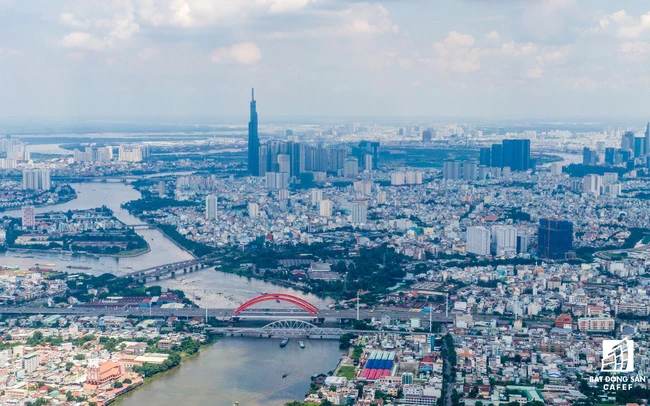
Organizational difficulties
Ho Chi Minh City expects the developed Eastern Creative City to be a center for knowledge and innovation, a gathering place for organizations, scientists and experts from across the country and the world to create new products, new values, new technology of international stature, in order to play a leading role in socio-economic development of Ho Chi Minh City.
However, besides the difficulties faced in legalities for developing ‘city within a city’ model in Ho Chi Minh City, there are other difficulties that Ho Chi Minh City faces, such as, defining the functions and organization of urban space, as well as how to create a functional socio-economic space. There are hundreds of cities in the world with their main function centered around research, creativity, testing and commercializing products, such as the Silicon Valley in the USA, Bangalore Valley in India, Pujatraya in Malaysia, Quenzon city in the Phlippines, King Apdula in the United Arab Emirates and Songdo in South Korea.
These creative cities were built by the government and investors on brand new land, according to the design on the blue print before the first brick was laid. They have a single-function in the city and the entire design, construction, operation, space organization, infrastructure, transport, public space, services, and management were fully planned before these cities were even established.
In Ho Chi Minh City, the Eastern Creative City will be formed by merging three districts, that is to say, District 2, District 9 and Thu Duc District, so organization of the entire space will be very difficult. If a creative city is established under a project by the Department of Home Affairs, it will be a new administrative unit with the largest area of 212 sq. km with a large population of 1.1 million.
The nucleus to move from a multi-functional residential area to a single-function unit will include 650 ha of the National University Urban Area, 800 ha of High-Tech Park, and if including Thu Thiem, it will add 657 ha more. In the world, university urban areas and high-tech zones are known to be lively in the day with the presence of hundreds of thousands of people, but at night the places are empty and no economic, social and cultural activities take place.
Unforeseen challenges
It will be a challenge to reorganize the space, and provide the technical infrastructure as well as the service infrastructure, and establish an administrative center so that this city operates synchronously to create a viable space for knowledge, advanced technology, and a high quality of life, not only in finance, but also in integration and mobility.
So, in the first stage, the units with high gray matter, providing the same function, should be merged to form a new unit with a clear administrative territory, a management apparatus, and a unique name. For example, Creative Science Town could include the National University campus of 650 ha, the High-Tech Park of an 800 ha campus and the connection between these two units which would include a further 28 ha. All three areas are located in Thu Duc District, and most recently the Department of Planning and Architecture has also proposed this adjustment.
For transition in the rest of the three districts, it is advisable to synchronize the whole city, under the project "Space and Administrative Restructuring of Ho Chi Minh City", in accordance with provisions of Resolution 653/2019/ UBTVQH14 dated 12 March 2019, made by the Standing Committee of the National Assembly on the arrangement of district-level and communal administrative units for the period 2019 to 2021.
As there are many districts to be merged and separated, many suburban districts will turn into urban districts. When the scheme is in place, it will be much more convenient to submit to the Government and the National Assembly, including the arrangement between districts. We should calculate carefully, because it is hard to accept that because of just 1,500 ha land area the lives of more than one million people could be disrupted.
One more thing to consider is to bring Thu Thiem into the Creative City fold. According to Decision 367 issued in 1996 by the Prime Minister, the Thu Thiem area would be the new dynamic center of Ho Chi Minh City. It would serve as a place to share functions and events when the existing center is overloaded.
According to Sasaki, which won the design competition in 2003 and then was finalized by the City and approved by the Government, Thu Thiem will be similar to Shanghai's Pudong. This will be the largest financial center in the country that looks like Wall Street in New York. Accordingly, in addition to the stock market, it will also be home to buildings of the largest economic groups in the world, with large squares to rally and hold parades on major holidays, have home theaters, planned exhibitions, nature museums, parks and green belts.
However, after the completion of Thu Thiem-2 bridge, it will only take a few minutes to reach Thu Thiem, so it will be better to merge Thu Thiem into District 1. The current area of District 1 is too small, only 7 sq. km, therefore not worthy of being a center of the city of 12 million people with an area that is 2,100 sq. km wide. If Thu Thiem is merged, it will not only increase the area of the central district, but more importantly, Thu Thiem can be managed more efficiently by District 1.




















